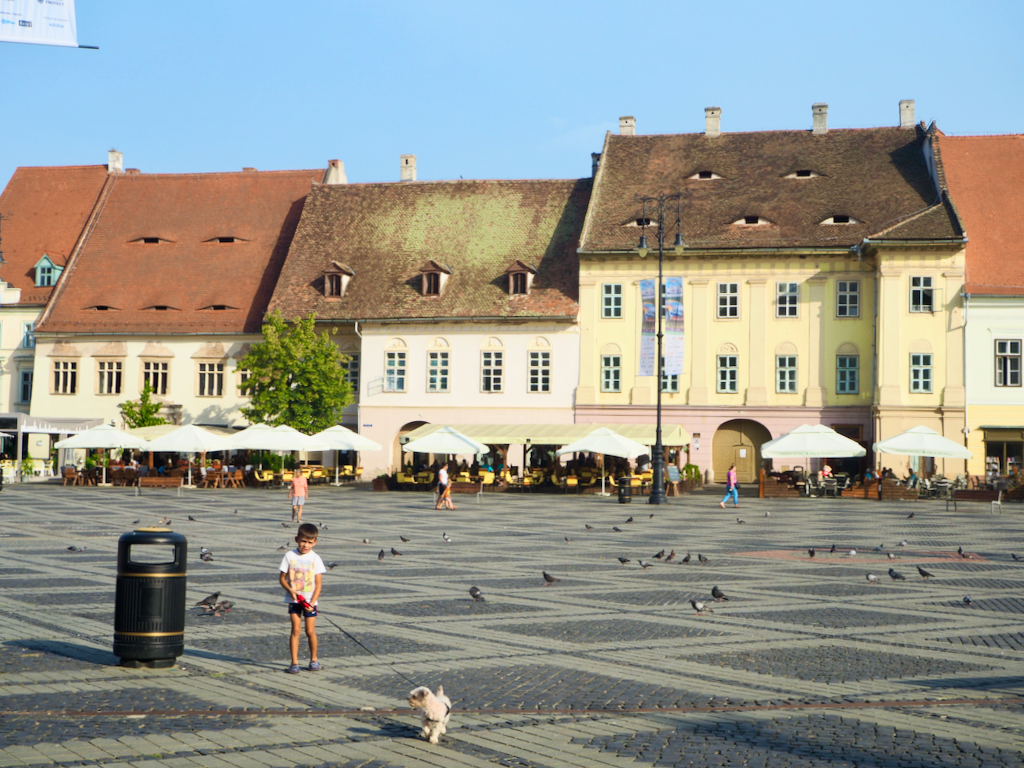
Legend has it that masons in Sibiu deliberately shaped openings in the roofs of medieval houses in this Transylvania city to resemble the secret organization’s emblematic ‘all-seeing eye.’
Regardless of whether the story is true or not, as I stroll through Old Town’s quaint squares, cobblestone streets and passageways I feel watched, indeed protected, by a thousand roving eyes.
Located on the edge of the Carpathians and selected as a former European Capital of Culture, charming Sibiu has many attractions to offer, both culinary and cultural.
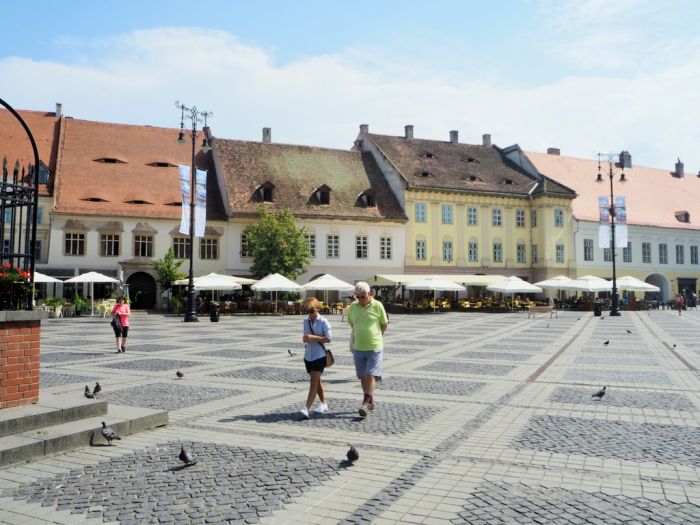
Known as the ’Southern Gate of Transylvania,’ it is where past and present blend together reflecting a rich history of co-existence by Romanians, Hungarians, Saxons, Armenians, Romani, Landlers and Greeks.
Here are a few tips and highlights to help make a trip to this baroque city even more enjoyable –
Accommodation
While there is a wide range of accommodation choices in and around Sibiu, one of the most central is the Ramada by Wyndham.
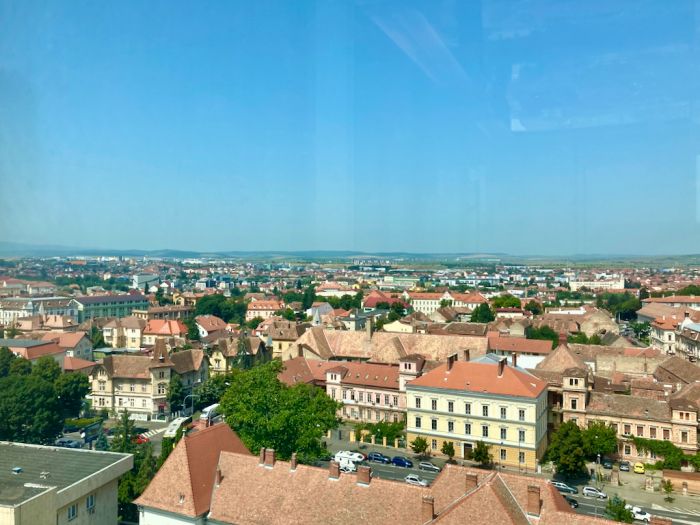
A modern hotel, with complimentary breakfast buffet, it is located a few minutes’ walk from Old Town attractions such as the Brukenthal National Museum and the historic Lutheran Cathedral. Select a higher floor as the ride on the elevator offers panoramic views over the city, as did our room itself through floor-to-ceiling windows.
Other amenities there include a restaurant, lobby bar/lounge, fitness center and a sauna. It also has a business center and meeting space.
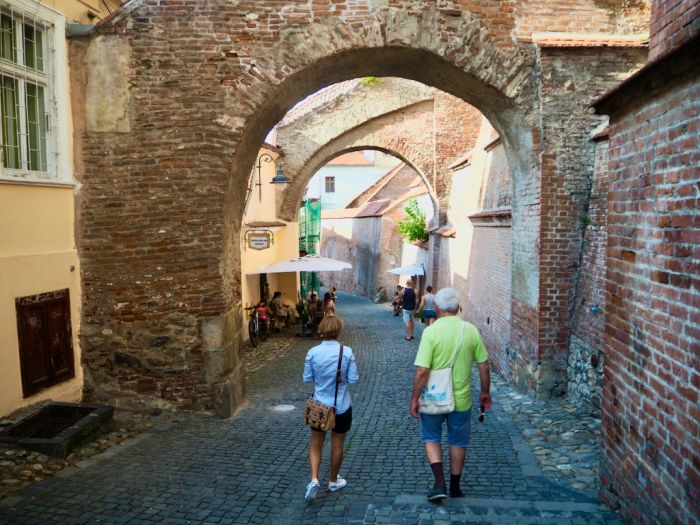
Tours
As finding an informed guide is key to an enjoyable experience in any new destination, we considered ourselves fortunate to benefit from the expertise of Adela Dadu, a Sibiu native with a Masters degree in tourism who has organized hundreds of walking tours and longer trips throughout Transylvania and other areas of Romania. Without divulging the comprehensive information Adela imparted to us about the history and development of the city, suffice it to say our day-long walk of Sibiu and our countryside tour the following day was both entertaining and enlightening.
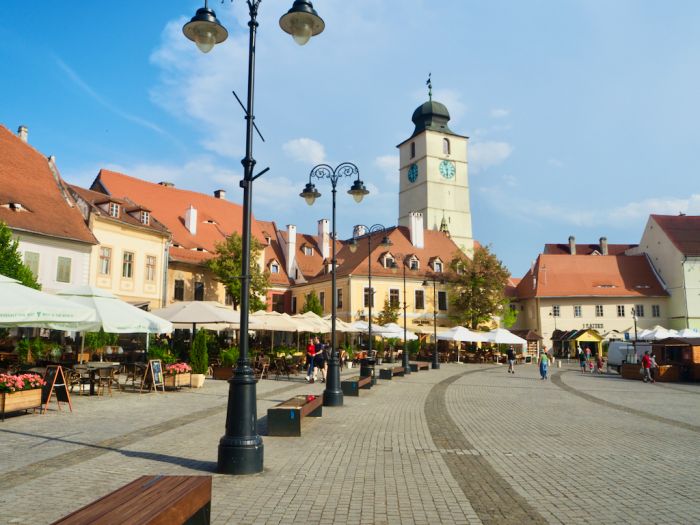
Food
As Sibiu was selected as a ‘European Region of Gastronomy’ two years ago, indulging in gourmand food and drinks in and around Sibiu is a must.
As Adela explained, “One of the greatest advantages of Sibiu is its geographical position, located at the bottom of the Carpathians and crossed by rivers and lakes. The southern part is rich in sheep and cattle, hence a varied menu based on meats and cheeses. Being mountainous, fresh trout is also one of our specialities. Together with our local Royal Maiden white wine, you have an unforgettable culinary experience.”
To prove her point, Adela led us to three separate restaurants in the city for food tastings.
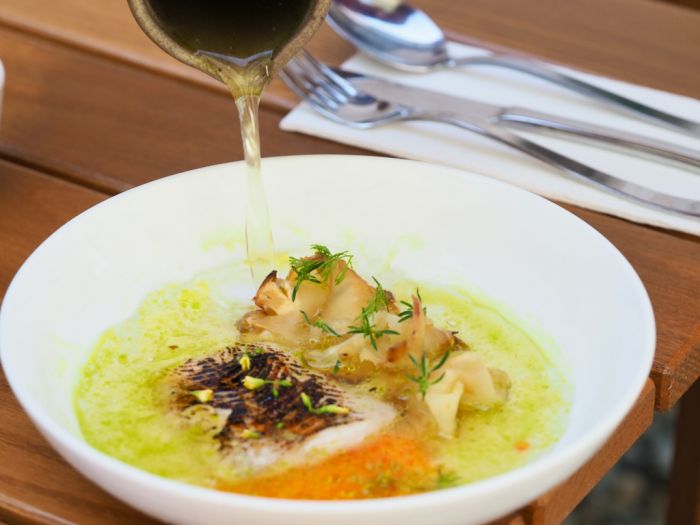
Plai
With its low, bare-beam ceiling and simple furnishings, this restaurant evokes Old World nostalgia, being formerly a weavers’ centre. It also offers peaceful alfresco dining in a pebble-floored walled space at the rear. Opened in May, its owners, gregarious Paul Moinea, and his partner, Petra Hianu, a qualified lawyer, possess a culinary gift for precision, priding themselves on creating contemporary cuisine from simple, fresh ingredients, skills based on kitchen experiences in Italy, Malta and Ireland.
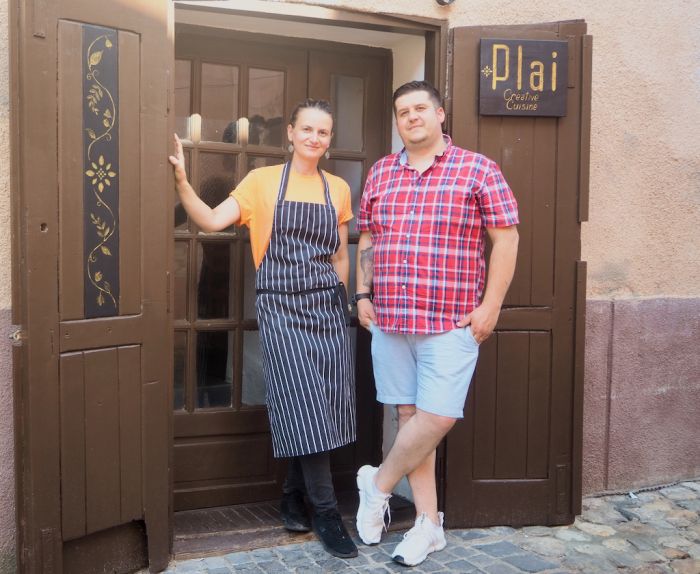
They rise to the challenge of transforming traditional Transylvanian recipes into contemporary dishes using local produce. Our tastings included trout consommé, cooked with active yeast, beef tongue with mangalita – a species of pig with more unsaturated fat than other pork, to the extent that Paul called it “salmon on four feet” – with fresh apples and fermented elderflower. Our early evening treat ended with a gin-infused dessert as well as Petra’s innovative version of carrot cake.
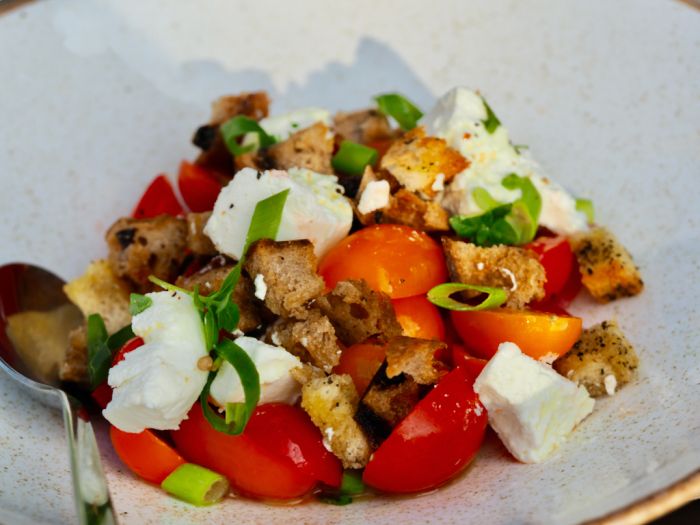
Restaurant Pasaj
Down a flight of stone steps, known as the Stairway Passage, from the main square, this popular boutique restaurant, serves up meats of all kinds, from rabbit with potato puree, lamb croquettes with spinach, poached egg and kefir; mangalita pork neck and even roasted grouse with gnocchi and hay-baked potatoes. But non-carnivores, never fear, there are also vegetarian dishes including asparagus soup with wild garlic pesto and walnuts, homemade pasta, as well as particularly tasty creamy, mousse-like potatoes.
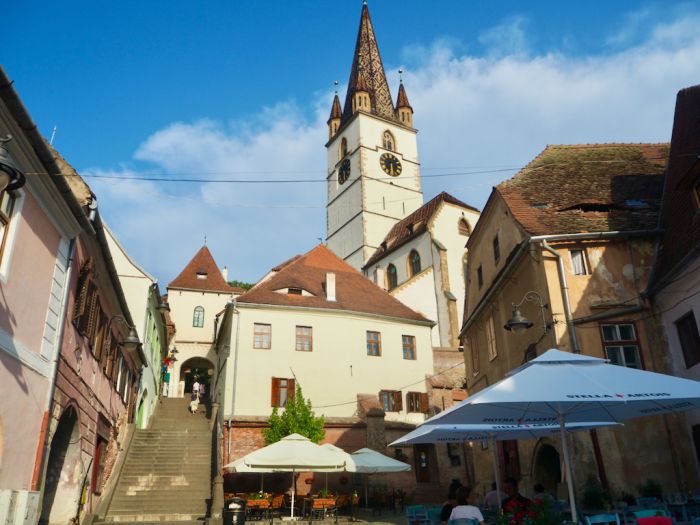
Desserts include chocolate mousse with raspberry and pavlova. Location is a major plus for Pasaj as dining alfresco here means guests have clear views up the passageway (‘Pasajul Scarilor’) linking the Upper and Lower Town and the turreted steeple of the 74-meter high Gothic-style Evangelical Church, an imposing landmark of the city.
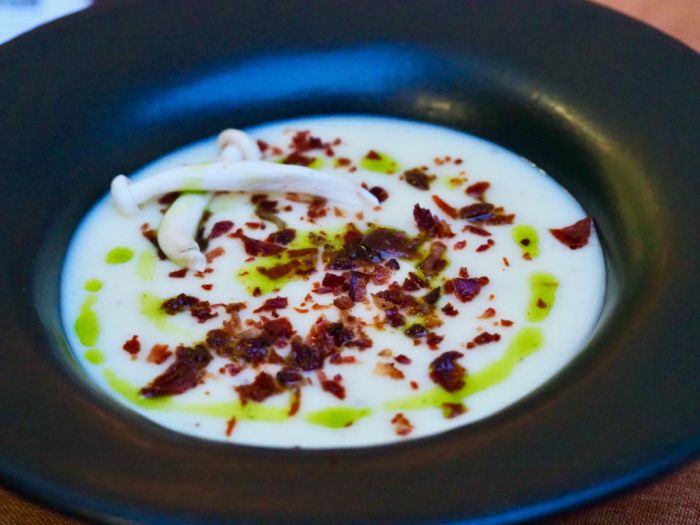
A short walk from the legendary Bridge of Lies, this restaurant is housed in one of Sibiu’s architectural jewels. With a 600-year history, it is one of the city’s oldest buildings, once serving as a leather workshop. During restoration over three years by Swiss businessman, Max Schweizer, the remnants of barrels, knives and coins dating from the 15th century were discovered.
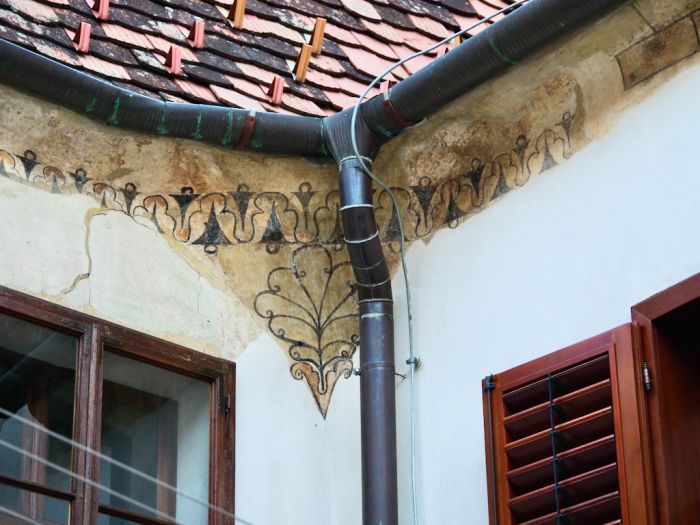
Dining alfresco takes place in a flower-bordered cobblestone courtyard, while inside are a series of attractively-designed rooms such as the ‘green room,’ featuring restored ceiling with beams and an original 16th century window; the ‘white room,’ where exhibitions and concerts take place; and the ‘portraits room’ containing photographs illustrating life in Sibiu over the last two hundred years.
Starters such as Angus beef tartare, sweet potatoes with mango sauce, potato soup with locally-sourced truffle and goat cheese salad with couscous indicate the quality of the menu. Mains focus on Italian cuisine, with homemade dishes such as tagliatelle with bolognese ragout, risotto, lasagne, spaghetti with garlic and chillies.

Museums
Two museums are a must-see in Sibiu, one indoor and one outdoor.
The former is the Brukenthal National Museum. Established in the late 18th century by former Governor of Transylvania, Samuel von Brukenthal, it comprises different entities around the city.
The Art Galleries, located inside Brukenthal Palace, host around 1,200 works linked to the leading European schools of painting, from the 15th to the 18th century, as well as collections of engravings, books, coins and minerals.
Brukenthal Library, also inside the palace, comprises around 300,000 items, including the highly-illuminated 16th-century ‘Book of Hours.’
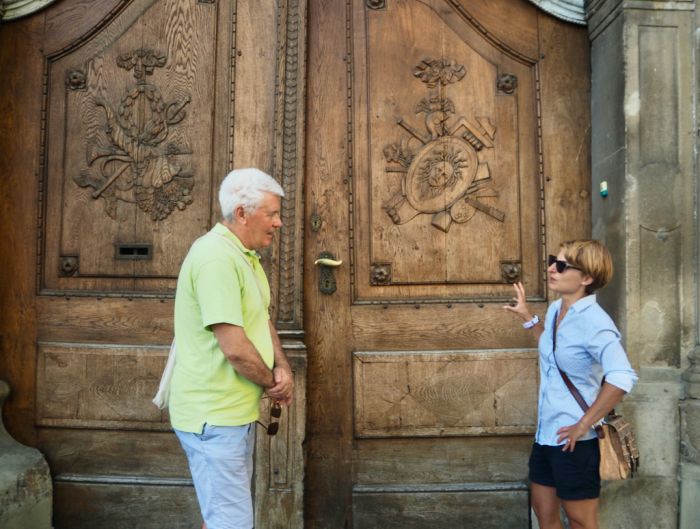
Also located around the city are the Museum of History, reflecting development of southern Transylvania; the Museum of Pharmacology in an old house where Samuel Hahnemann invented homoeopathy, with some of his phials and plans on display. Wooden counters and stacks of glass jars re-create the atmosphere of an 18th-century apothecary and a reconstructed shop has several laboratories with over 6,000 ancient medical instruments.
The Museum of Natural History comprises over one million exhibits ranging from minerals to animals, rocks, plants, fish and insects.
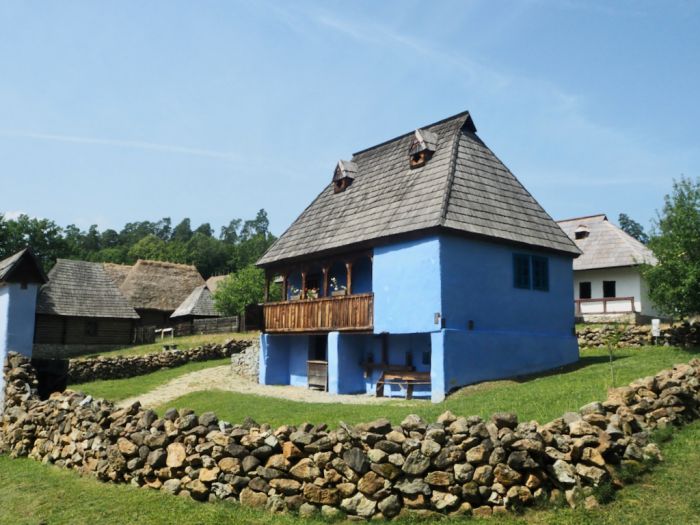
Opened in 1905 and spread across 100 hectares, ASTRA is the largest open-air museum in Romania. More than 300 houses and other buildings in a forest around two artificial lakes with over 10 kilometers of walkways between them, offer a glimpse into the changing lifestyles of people over the centuries.
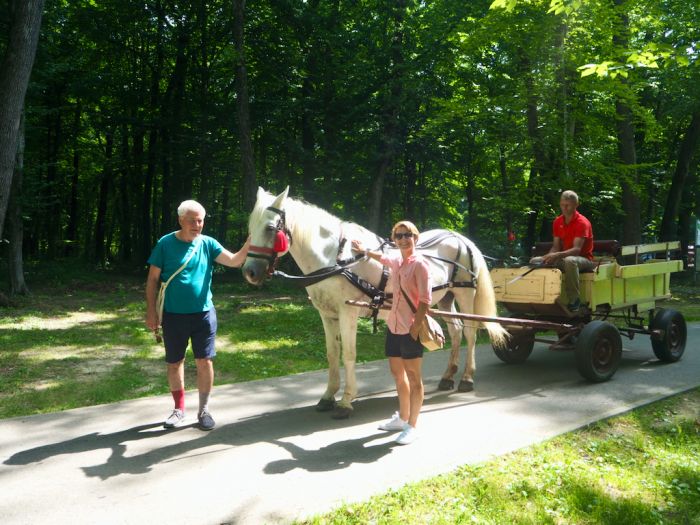
Highlights include windmills from the Black Sea and Danube Delta regions, thatched shepherds’ homes, pottery and iron workshops, a working inn, a pub, a dance pavilion and a wooden ferry. Livestock in the park include sheep and donkeys. A working garden produces vegetables and herbs from the region. Horse-drawn carriage rides are available and the museum has just launched a new virtual reality show reflecting local traditions.
Festivals
Other cultural highlights on Sibiu’s calendar include a wide range of festivals, including theatre, jazz, film and street art, as well as a ‘Song of the Mountains’ folklore event, which attracts more than 600 artists. It even hosts its own medieval festival, with a ‘knight’ jousting competition, a fashion week and potters’ fair.
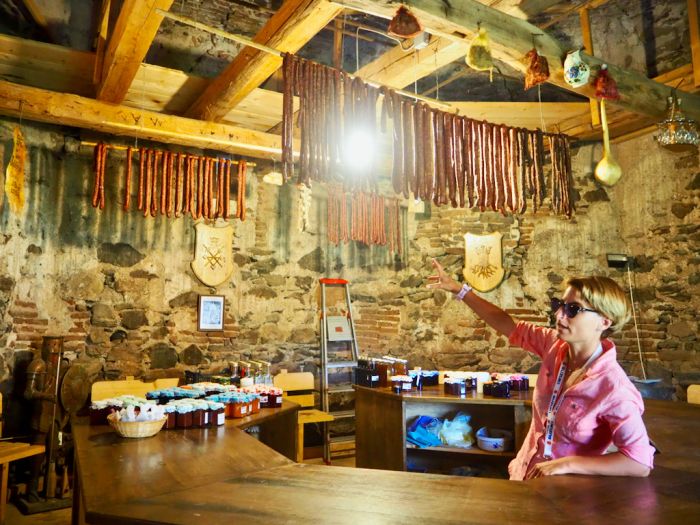
Beyond Sibiu
Not only does Sibiu hold many attractions, the countryside around it is also worth exploring.
Driving leisurely among verdant pastures and rolling hills in our hybrid Toyota from Enterprise Romania, we passed hiking trails, health spas, salt lakes, as well as a unique characteristic of the region – fortified medieval churches. Built mainly by Saxon and Hungarian Szeklers as protection against Ottoman invasions, about 150 survive throughout Transylvania, of which seven are UNESCO World Heritage sites.
Adela brought us to Cristian, a village 10 kilometers outside Sibiu, to view such a Gothic church. Founded in 1495, it was reinforced over the centuries and its defensive tower used as a ‘bacon tower,’ the perfect place for storing cured meats, where we enjoyed tasty traditional cold cuts.
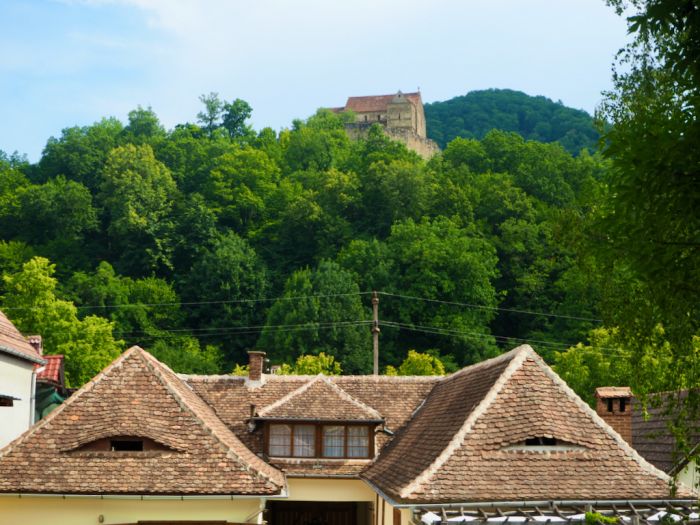
Southwest of Cristian is the village of Cisnadie which features the oldest Romanesque-style church in Romania, atop a 100-meter high hill, dedicated to Saint Michael and built entirely of stone.









